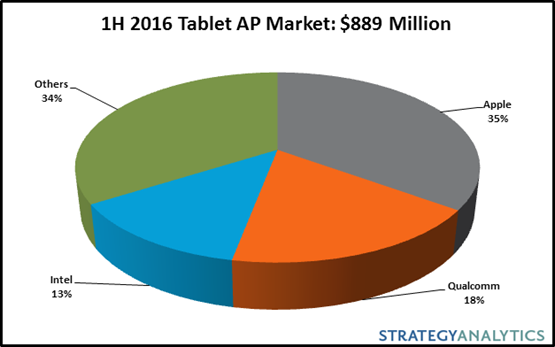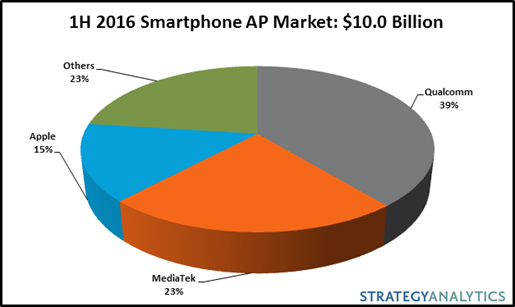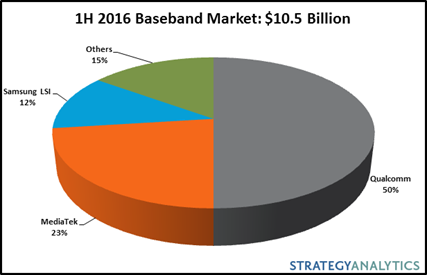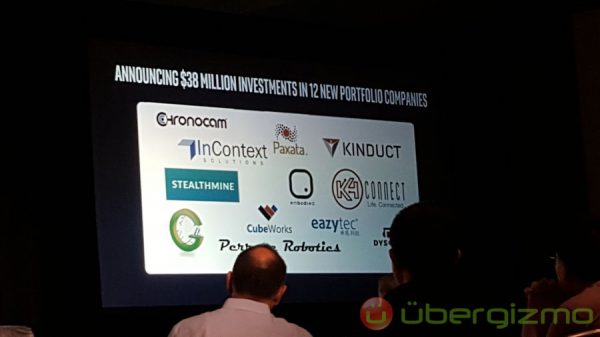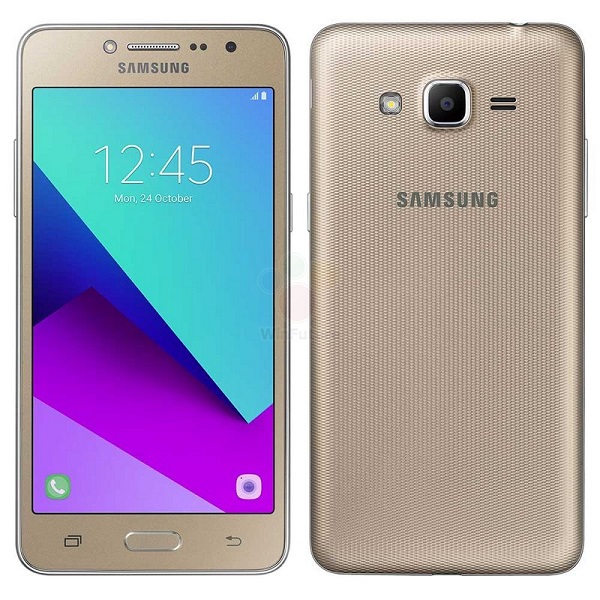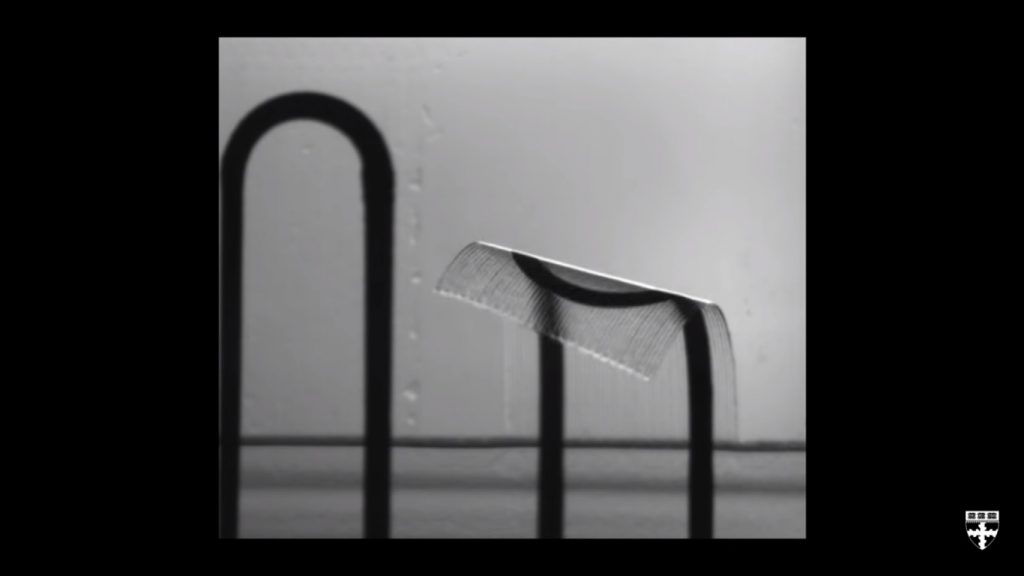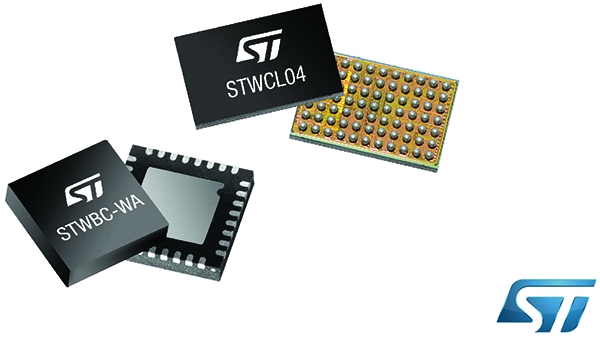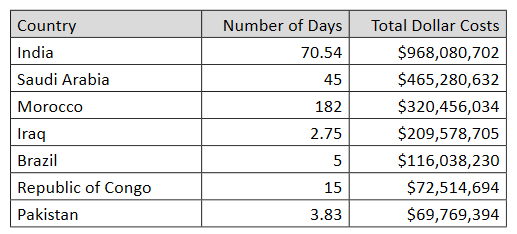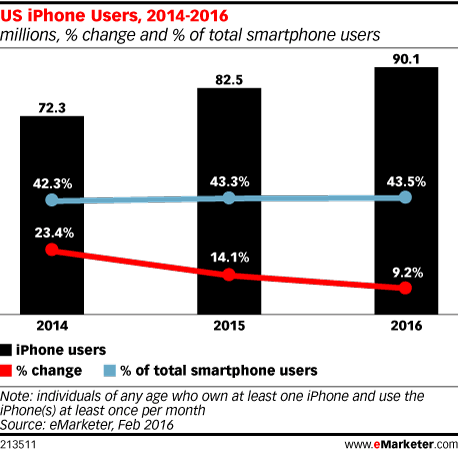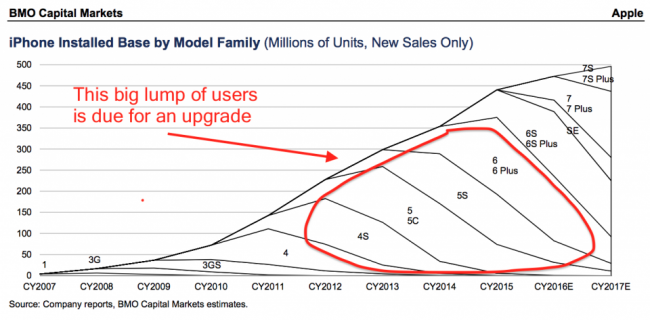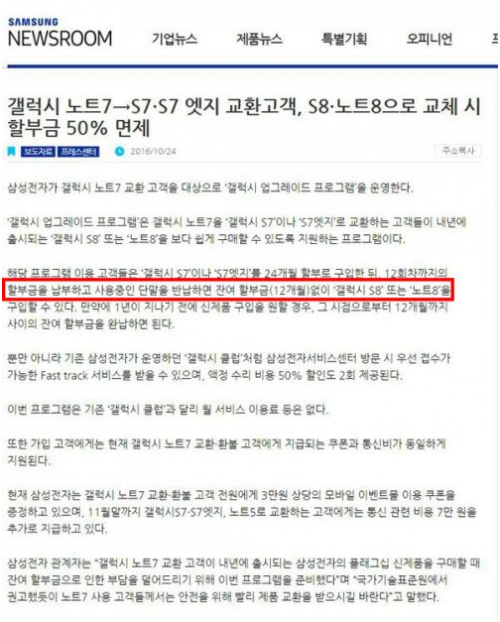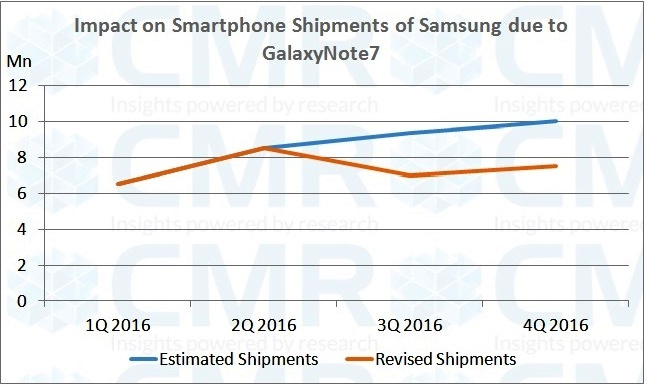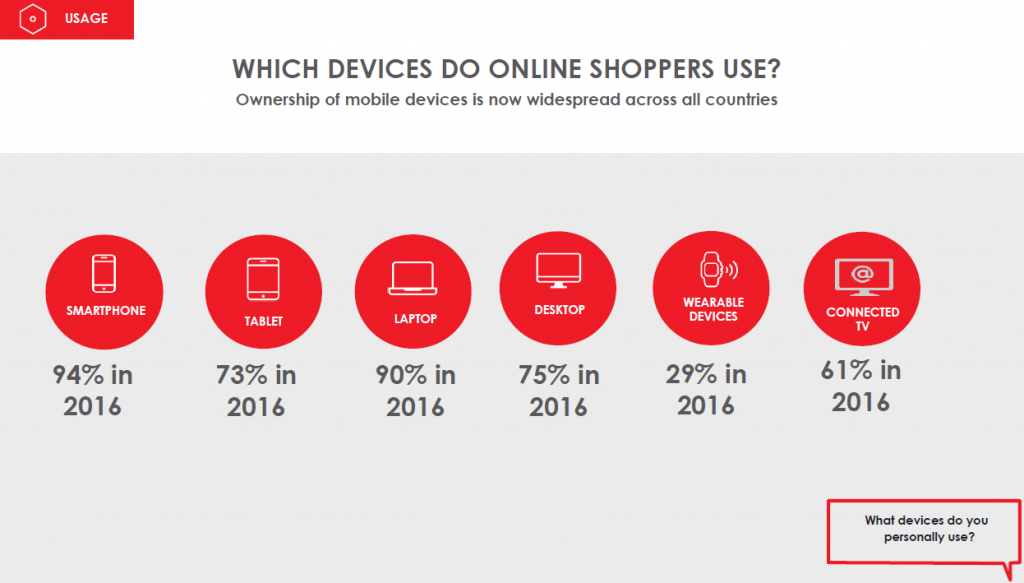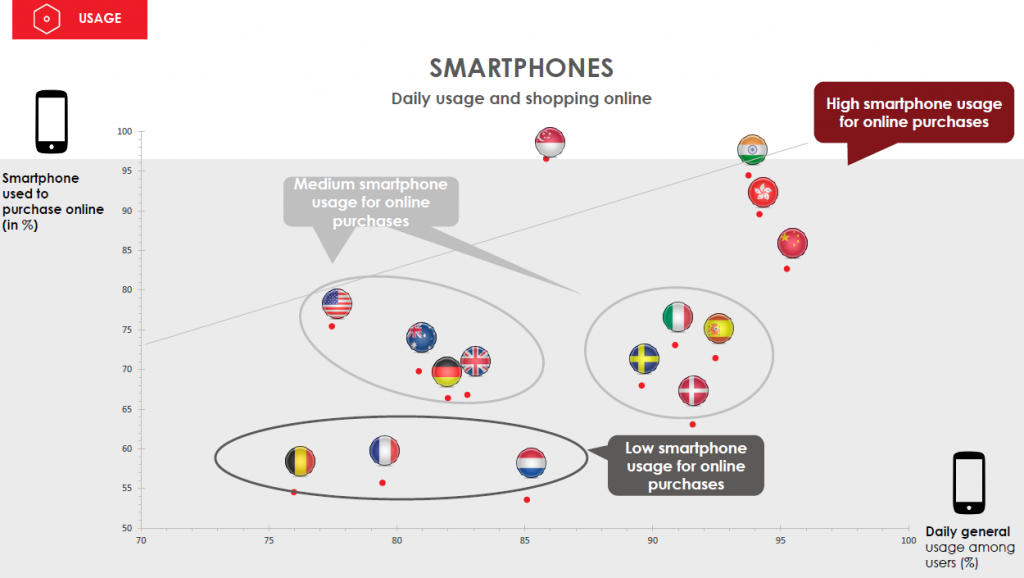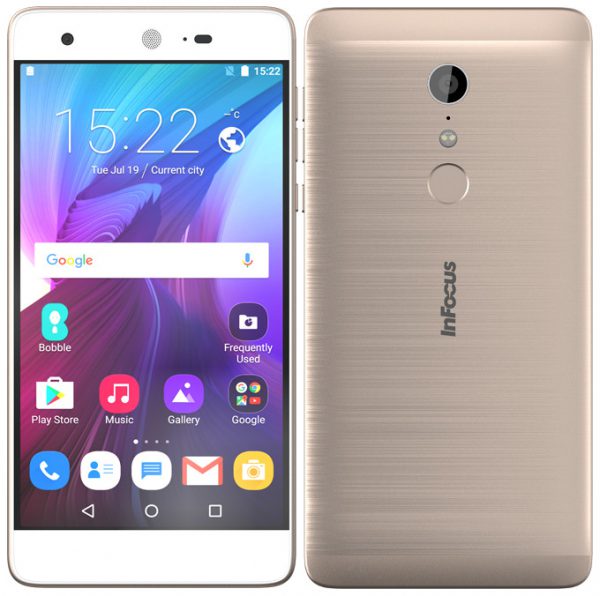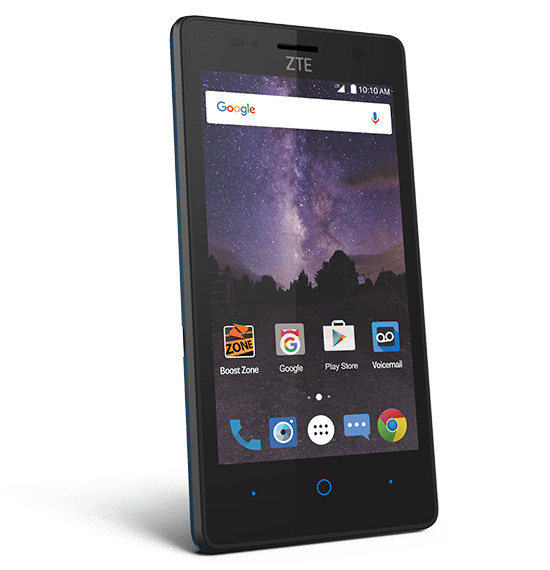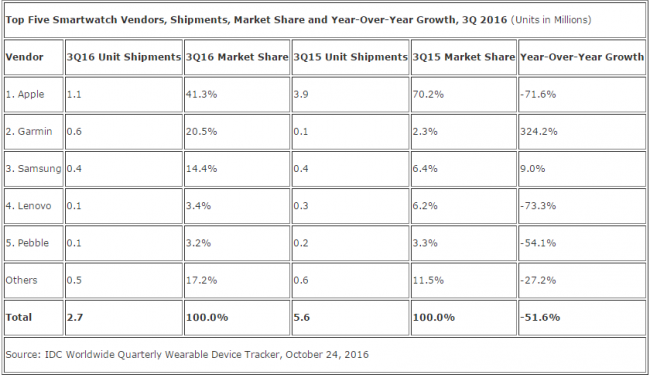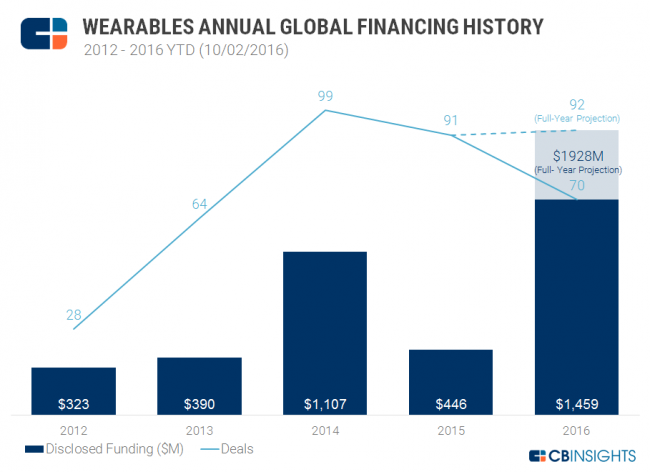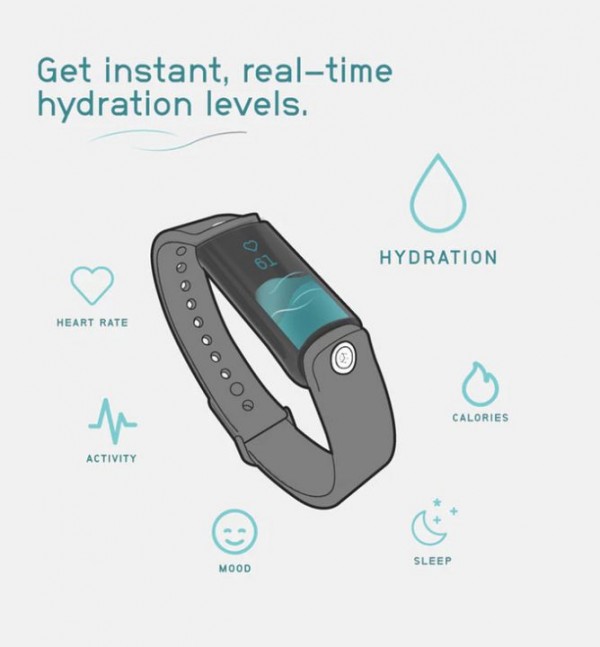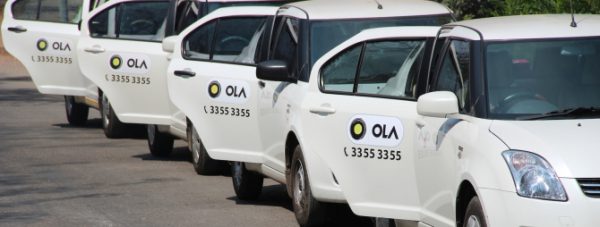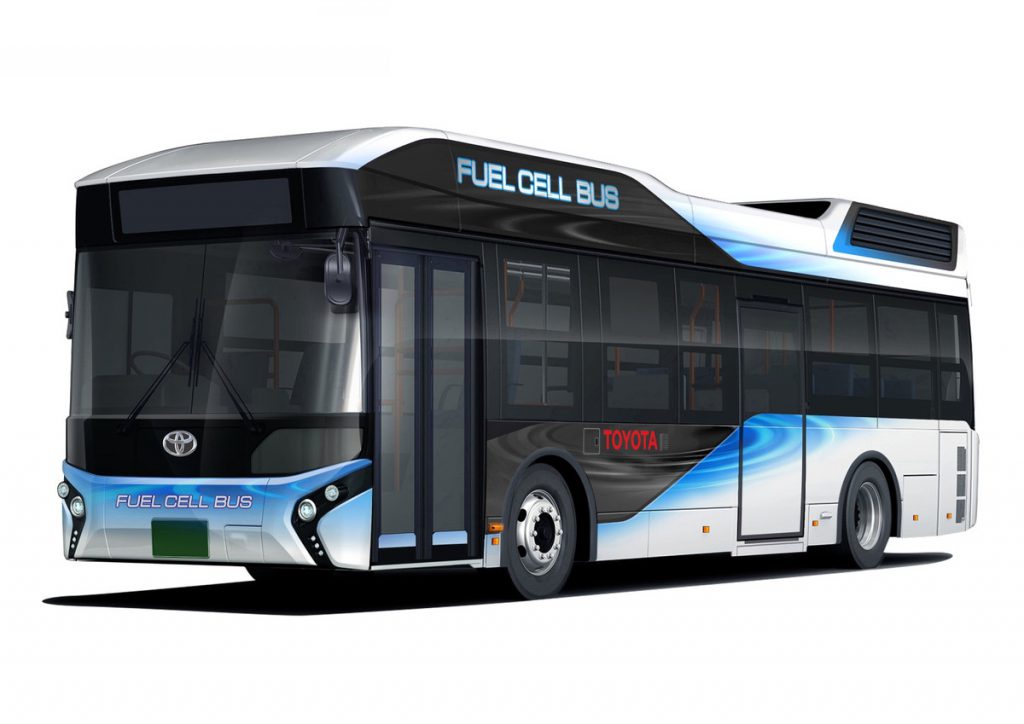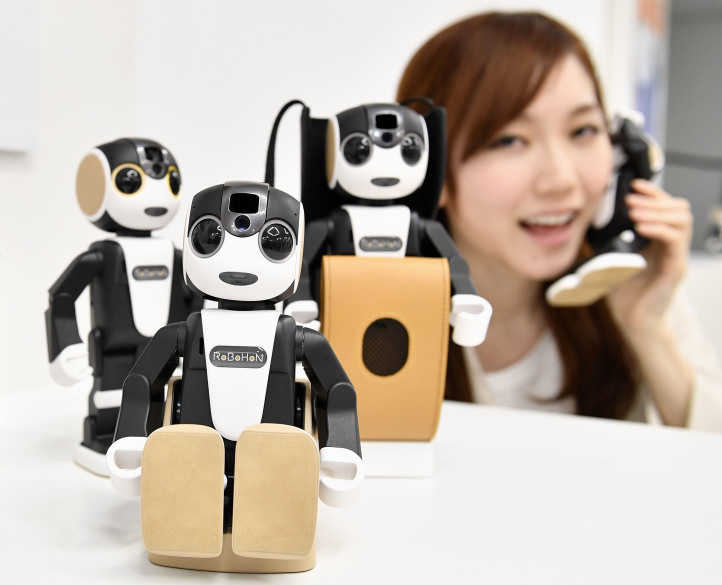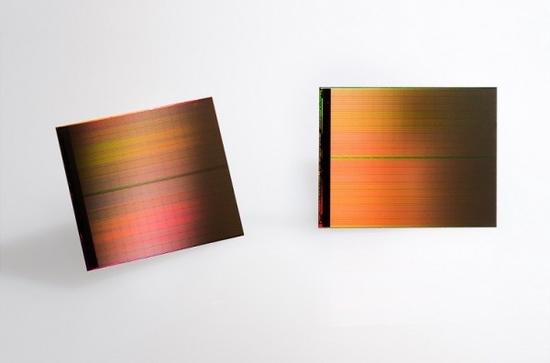
10-25: Samsung to launch first MediaTek-powered processor (MT6737) smartphone; Apple 2017 “iPhone 10” sales is set to “explode”; etc.
|
Chipset |
| The global tablet Applications Processor (AP) market declined 34% YoY falling to USD889M in 1H16. According to Strategy Analytics, Apple, Qualcomm, Intel, MediaTek and Samsung LSI captured the top-5 revenue share rankings in the tablet AP market in 1H16. (Strategy Analytics, press, C114, Kejixun) |
| The global smartphone Applications Processor (AP) market grew 3% YoY to reach USD10B in 1H16, according to Strategy Analytics. Qualcomm, MediaTek, Apple, Samsung LSI and Spreadtrum represent the top-5 revenue rankings in the global smartphone AP market in 1H16. (Strategy Analytics, press, C114) |
| The global cellular baseband processor market declined 2% YoY falling to USD10.5B in 1H 2016, according to Strategy Analytics. Qualcomm, MediaTek, Samsung LSI, Spreadtrum and HiSilicon captured the top-5 baseband revenue share spots in 1H 2016. (Strategy Analytics, press, EE Focus) |
| Intel Capital has announced USD38M of new investments in 12 startups that develop technology in 4 categories: autonomous machines, data and connectivity, sports and health and virtual reality. (Ubergizmo, Business Wire, Venture Beat, article, IT168) |
| Samsung’s first MediaTek-powered Galaxy Grand Prime Plus (Eastern Europe) or J2 Prime (South America) to be launched, running MT6737T. Currently J2 Prime is being sold in Russia with less than USD100. (TechNews, CN Beta, GSM Dome, Gizmo China, Softpedia) |
| Harvard University has made the first entirely 3D-printed organ-on-a-chip with integrated sensing. It can be quickly fabricated and customized that scientists can use to test the efficacy of their synthetic tissues, instead of inserting them in animals. (Engadget, Harvard, Nature Materials) |
|
Touch Display |
| According to TrendForce’s WitsView, prices of LCD panels for smartphone displays will remain high to the end of 2016 as there is no letup in demand. Prices of mid-range and low-end smartphone panels have risen for 3 consecutive quarters in 2016. Moreover, strong short-term demand for mid-range and high-end smartphones with FHD resolution screens are also pushing up prices of FHD Cell panels. (TrendForce, press, TrendForce[cn], press, 52RD) |
|
Memory |
| In 2015, Intel introducing so-called 3D XPoint technology, which fits nicely in the market somewhere between DRAM and SSDs. The upcoming server Skylake EP processors will not support 3D XPoint. It looks like the first server systems to support the new memory tech will be coming out as late as 2019. (163, 91.com, East Money, Hexus, Neowin) |
|
Sensory |
| Google is reportedly is working on a standalone headset that is part virtual reality and part augmented reality. It will use sensors and feature integrated eye-tracking technologies and algorithms that let it “map out the real-world space in front of a user”. Movidius, the computer vision company that Intel is acquiring, is reportedly making some of the headset’s components. (Engadget, The Drum, Pocket Lint, CNET, Techno Buffalo, Digital Trends, iFeng, China.com) |
| Movidius announced that the Myriad 2 Video Processing Unit (VPU) will soon power a new generation of Hikvision smart surveillance cameras capable of recognizing everything from suspicious packages to distracted drivers. (Movidius, Engadget, 163) |
| Dysonics is a startup in the VR audio space looking to build the hardware and software workflows that give VR content creators high-fidelity solutions to bringing top-notch audio into their content. It has closed a Series A investment led by Intel Capital with participation from Rawah Partners. (TechCrunch, Ubergizmo, Upload VR, Sohu) |
|
Battery |
| The combination of STMicroelectronics’ STWBC-WA charging-transmitter controller and STWLC04 wireless battery-charger receiver enables power transfers up to 1W with smaller coils than any other chipsets in the market: just 11mm diameter coils on the receive side and 20mm for the transmitter allow tinier, slimmer form factors. (EE Trend, EET Asia, WebWire) |
|
Connectivity |
| A new study from the Brookings Institution suggests the cost of Internet shutdowns in Jun. 2015~Jun. 2016 is USD2.4B. It is important to point out that this analysis only looked at the economic impact on Gross Domestic Product (GDP). (TechCrunch, Brookings Institution report, Sohu) |
|
Smartphones |
| Apple is holding tight to its share of smartphone users in the US, eMarketer estimates. More than 90M people in the US own and use Apple iPhones in 2016, representing 43.5% of the smartphone population. That’s slightly up from 43.3% in 2015 and 42.3% in 2014. Smartphone owners are still most likely to have an Android handset: 52.0% have one in 2016, up from 51.7% in 2015. (eMarketer, press, CN Beta) |
| Cowen’s Timothy Arcuri believes Apple iPhone sales are set to explode when Apple introduces the successor to the iPhone 7, which they believe will be called “iPhone 10” in 2017. Arcuri’s theory is that, over the next few quarters, 43% of iPhone users will be using a device older than 2 years and will be ready for an upgrade. (Business Insider, Cult to Mac, CN Beta) |
| Due to the increase of Japanese yen, in addition to the under-expected sales of Apple iPhone 7 / 7 Plus, orders of 6 Japanese suppliers, including Murata, TDK, Kyocera, Nidec, Alps Electric and Nitto Denko in 3Q16 have shrunken 6% on year. Though the rate of shrinkage is smaller than that of last quarter (2Q16, -9%), it is already the 4 consecutive quarters of decline. (CN Beta, 163, My Drivers) |
| According to Korea local online market Gmarket, sales of unlocked smartphones doubled in the Jan-Sept. 2016 from the same period in 2013. The sales growth has mainly been led by foreign brands such as Apple, Huawei and Sony, which have grabbed 66% of total market share in 2016. Chinese brands account for nearly half of foreign brands. (CN Beta, Korea Herald) |
| Samsung’s new program gives customers the option to exchange their Galaxy Note 7 for a new S7 or S7 edge at a reduced cost, as long as they upgrade to a S8 smartphone or a Note 8 in 2017. (Phone Arena, CN Beta, Android Authority, Samsung, Korea Herald) |
| As per CMR’s impact analysis, Samsung smartphone shipments target may fall short of 4M units than its estimated shipments for 2016, due to Galaxy Note 7 fiasco. However, Samsung will continue to maintain leadership in the Smartphone segment in India, but its market share will shrink by 4.2 percent points and settle at around 25.5% instead of estimated 29.7%. (Android Headlines, India Times, CMR India, press) |
| According to Wired’s Kelsey McClellan, Google had been working on its own phone for quite a while, before deciding to scrap everything toward the end of 2015 and start anew, meaning that the Pixel and Pixel XL went from the drawing board to launch in just over 9 months. (Wired, Phone Arena) |
| DigitasLBi has released a report about online shopping. Smartphone is being used the most to conduct online shopping, follows by laptop and desktop. Retailer websites or apps are the first digital information source in all countries. Friends and family are important in the buying cycle: 35% of shoppers consult them. (DigitasLBi report, 199IT) |
| PayPal has announced that it is rolling out as an additional payment option within Facebook Messenger, which currently supports payments via debit cards. (CN Beta, WSJ, Venture Beat) |
| InFocus EPIC 1 is launched in India – 5.5” FHD IPS LCD display, MediaTek MT6797M processor, 16MP PDAF + 8MP cameras, 3GB Ram, 32GB storage, Android 6.0, 3000mAh battery, INR12,999. (Android Authority, BGR, Fonearena) |
| ZTE Tempo is launched at Boost Mobile US – 4.5” FWVGA TFT display, Qualcomm Snapdragon 210 MSM8909 processor, 5MP + 2MP cameras, 1GB RAM, 8GB storage, Android 6.0, 2200mAh battery, USD69.99. (Phone Arena, Boost Mobile) |
|
Wearables |
| According to IDC, total smartwatch volumes reached 2.7M units shipped in 3Q16, a decrease of 51.6% from the 5.6M units shipped in 3Q15. The sharp decline in smartwatch shipment volumes reflects the way platforms and vendors are realigning, noted Ramon Llamas, research manager for IDC. (Android Authority, IDC, press, Android Headlines, CN Beta) |
| According to CB Insights, 2016 will see a 1% increase in deals and 332% increase in funding for wearables. There have been some notable recent notable exits, including Withings (bought by Nokia for USD191M 2Q16) and Misfit (acquired by Fossil for USD260M 4Q15). (CB Insights, press, 199IT) |
| LVL is hailed as the first wearable hydration monitor. The designers say that LVL allows the user to track the complete picture of their health and tracks activity, sleep, mood, and heart rate. (CN Beta, Slash Gear, Wearable) |
|
Internet of Things |
| The judicial decisions of the European Court of Human Rights (ECtHR) have been predicted to 79% accuracy using an artificial intelligence (AI) method developed by researchers at UCL, the University of Sheffield and the University of Pennsylvania. (Ubergizmo, UCL, Business Insider, Sohu, Jiqizhixin) |
| ANI Technologies Pvt’s Ola may raise INR1700-2000 crore (USD250-300M) in a new round of funding led by Japan’s Softbank. (Android Headlines, BGR, Verdict, Money Control, Economic Times) |
| Alongside its Mirai sedan, Toyota will begin selling fuel-cell buses “Toyota FC Bus” in Japan in 2017. It already has an agreement with the Tokyo Metropolitan Government to supply 2 buses for transit service, and hopes to have a fleet of 100 buses in operation in time for the 2020 Tokyo Olympics. (Digital Trends, CNET, Green Car Reports, 163, Tencent) |
| Sharp is exploring the corporate and foreign visitor markets for its small humanoid robot phone “RoBoHoN” equipped with artificial intelligence features, following the release of an app to make it possible for the device to serve as a company receptionist. The first-year overall sales target for the RoBoHoN, which is priced at over JPY200,000, is 60,000 units. (Kyodo News, CN Beta) |
